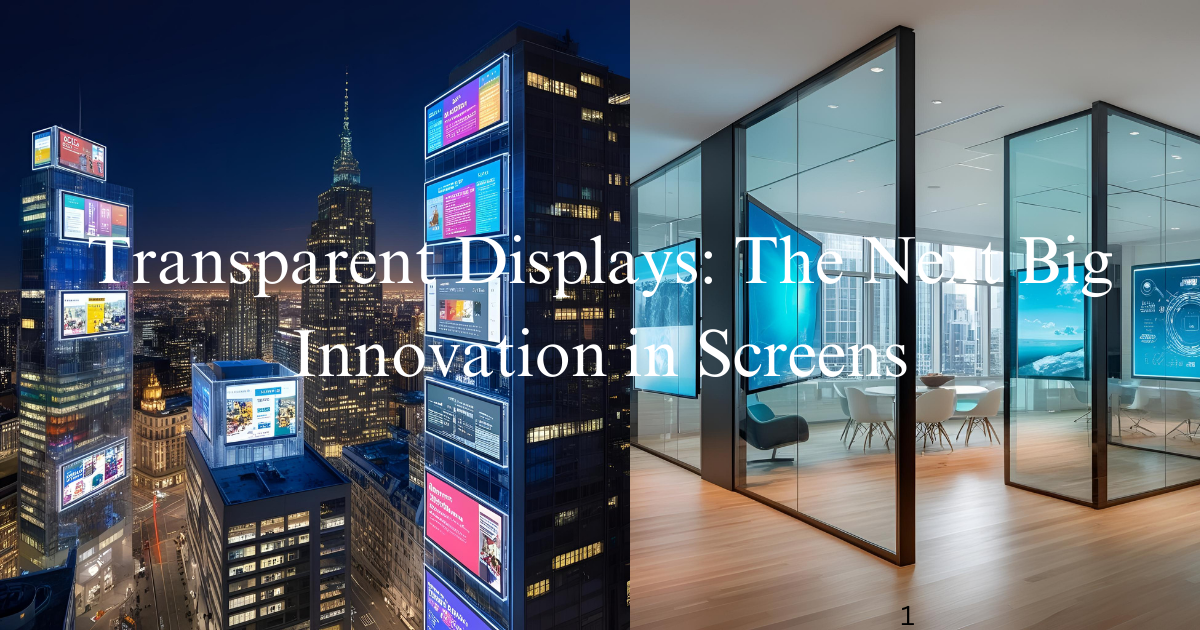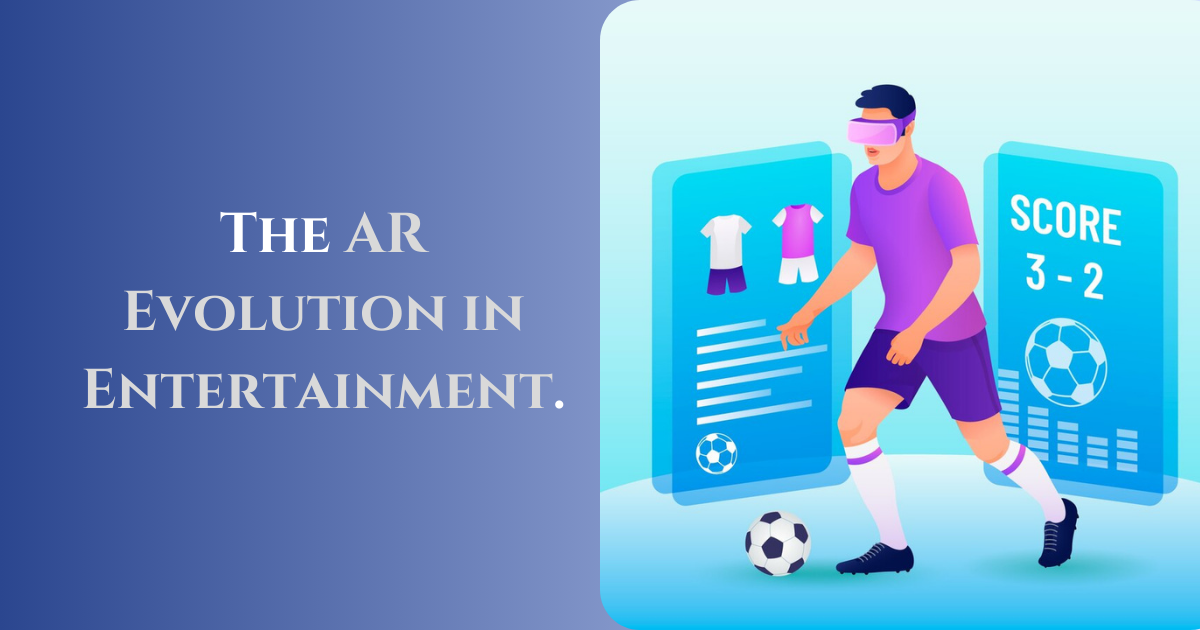The technological landscape has been changing quickly in recent years, with each new development pushing the envelope farther than in the past. However, introducing transparent displays is one of the most exciting innovations that could completely change how we interact with screens.
Transparent screens are rapidly becoming a reality, and industries all over the world are beginning to realize their amazing potential, even though they may sound like something from a futuristic science fiction film.
Imagine being surrounded by tall skyscrapers in your favourite city and seeing something amazing: a huge digital billboard that lets you see right through it in addition to displaying colorful advertisements! Yes, you heard correctly. The advent of transparent displays has the potential to completely transform how we engage with the outside world.
Prepare yourself for an incredible leap into the future!
The Mind-Blowing Technology Behind Transparent Displays
Digital screens that let light through to create a transparent visual experience are known as transparent displays. Transparent screens simultaneously display content and provide a clear view of what is behind them, in contrast to traditional opaque displays. These displays frequently use LCD (Liquid Crystal Display) or OLED (Organic Light Emitting Diode) technology, which can both be designed to be see-through while still producing vivid, high-quality images.
Although the idea may seem straightforward, transparent displays require complex engineering and design to strike the ideal balance between transparency, brightness, and visibility. These screens give us the best of both worlds: dynamic, vibrant images that seem to float in space, and the ability to see through the display.
How do transparent screens operate?
Transparent displays are fundamentally driven by technologies like OLED and LED. Lightweight and thin transparent displays are made possible by these technologies, which enable the screens to emit light without the need for a backlight.
The individual pixels in OLED transparent screens produce color and light, and the screen stays clear even when the device is turned off. This feature enables both a clear view through the screen and the display of content. On the other hand, full transparency is not possible with traditional LCDs since they need a backlight.
Additionally, transparent screens frequently have touch-screen capabilities built in, providing interactive experiences that users can control with a simple swipe or tap of the screen.
What makes transparent displays revolutionary?
Transparent displays have a wide range of exciting applications in various industries. User experiences can be completely redefined by the exceptional capacity to show digital content while preserving a clear view of the surroundings behind the screen.
Let us examine the factors that make this innovation so significant:
- Innovative Smart Glass:
Applications for transparent displays in smart glasses are among the most exciting. Transparent display technology in smart windows can be used for a variety of functions, including controlling sunlight, acting as a screen, and offering privacy. This technology could be used in homes, workplaces, and even skyscrapers to create dynamic spaces that adapt to the needs of users in real-time.
For example, in a business context, a conference room might have a transparent screen that serves as both a presentation screen and a window for natural light. By alternating between clear and opaque states based on the situation, these smart windows may eventually provide privacy at the touch of a button as technology develops.
- Transforming Retail and Advertising
One of the most effective tools in the advertising industry is the transparent display. Imagine seeing beautiful visuals that seem to blend in perfectly with the surroundings as you stroll through a shopping centre and notice ads that are straight into the windows. Without blocking the view of the outside world, these transparent screens could show advertisements, product details, or even interactive experiences that draw in onlookers.
Transparent screens, for instance, could be used as storefront windows in retail settings, enabling merchants to show product details on the glass while still letting customers see inside. This offers a completely new kind of brand storytelling as well as a futuristic shopping experience.
- Enhanced Automotive Displays
Another industry that could greatly benefit from transparent screen technology is the automotive sector. A safer and more futuristic driving experience can be had by integrating transparent displays into dashboards or windshields. Augmented reality (AR) navigation displays, for example, could be mounted on a windshield and project alerts and directions straight into the driver’s field of vision without diverting their attention from the road.
Furthermore, without the need for extra screens or gadgets, transparent displays can show real-time information on traffic updates, weather, and vehicle performance. The future of driving may be completely changed by this smooth incorporation of digital content into the vehicle’s surroundings.
- Experiences with Augmented Reality
A key component of the development of augmented reality (AR) is transparent displays. Transparent screens make it easier for people to interact with both the digital and real worlds by blurring the boundaries between them. Transparent screens are essential for providing immersive experiences that feel organic and integrated into the real world, whether they are used in AR glasses or heads-up displays (HUDs) for other devices.
Imagine wearing an augmented reality headset with transparent lenses that overlay information on your field of vision, such as product details, notifications, or directions, while preserving your view of the outside world. Beyond the confines of conventional screens, next-generation augmented reality experiences are being made possible by transparent displays.
Transparent Displays’ Future
Transparent displays are still developing, and a few issues must be resolved before they can realize their full potential, just like any other cutting-edge technology. When compared to conventional screens, the brightness, contrast, and resolution of current transparent displays are comparatively constrained. However, the performance and cost-effectiveness of transparent screens are being rapidly improved by developments in OLED and LCD technology.
Since companies like LG, Samsung, and Panasonic have already made great progress in developing transparent OLED technology, we can anticipate seeing more consumer and industrial applications in the near future. Transparent displays may soon permeate every aspect of our daily lives, from smart cities to smart homes.
Conclusion: The Unveiling of the Digital Future
One of the most exciting developments in the tech industry right now is without a doubt transparent displays. Transparent screens have the potential to revolutionize a number of industries, including retail, automotive, advertising, and smart homes. They will also alter how we interact with the digital and physical worlds. Transparent displays will surely be crucial in defining the next generation of technology as we move toward a future where digital content is seamlessly integrated into our surroundings.
Stay tuned, because the world of transparent displays is just beginning to unfold, and the future looks incredibly promising.










